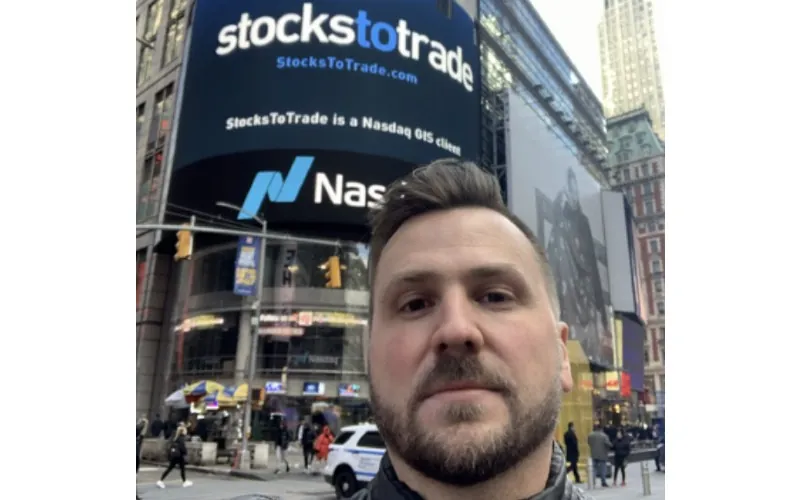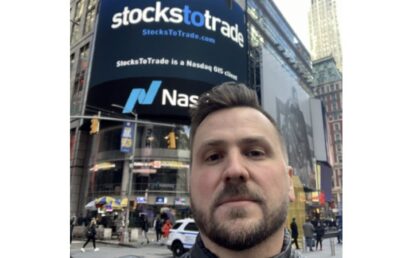When Zak Westphal co-founded the stock trading platform StocksToTrade back in 2012 (alongside Timothy Sykes), he knew it would be an uphill battle trying to break into the finance world as unknown disruptors. Going up against major players, hedge funds, and a wide range of other scrappy startups, Zak admits that growing his fintech startup has been full of hairpin turns.
But over a decade later, with over 30,000 subscribers now using StocksToTrade as their trading platform of choice, it’s clear Zak overcame those obstacles through a mix of grit, patience, and an obsession with customers.
In this post, we will share some insights from Zak Westphal’s journey – breaking down some of the blood, sweat, and tears behind bringing a fintech startup to life.
Lack of Trust in New Players
“We weren’t an established Wall Street bank or big tech firm,” Zak explains. “So gaining investor trust was tough in the early days. A lot of potential customers worried we’d fold in a year and their money would disappear – and who could blame them? I understood that doubt intimately. It reminded me exactly why my co-founder and I started StocksToTrade – to bring accountability through transparency.”
Being relative unknowns compared to the industry giants, building credibility felt like pushing a boulder uphill. Zak recalls months of kicking off meetings by assuring prospects “yes, we’re an actual real company!”
To power through the scepticism, Zak focused relentlessly on security, support, transparency and responsiveness.
“We tackled misperceptions head-on by over-delivering on security, support and value right from the start. We also leaned on our core vision around accessibility and inclusion. I wanted that purpose to radiate through all messaging – from the website to ads to my own social media engagement. Gradually, that clarity of mission won over initial naysayers.”
That obsessive focus on trust-building paid off. As happy users shared experiences online, word-of-mouth slowly grew, gradually attracting investors previously afraid of risking assets with startups.
Slow User Adoption
Even after clearing the initial credibility hurdle, getting people to switch platforms still dragged.
“It was tricky convincing folks comfortable using their legacy platforms to give us a shot,” Zak admits. “No matter how polished our UI, advanced our toolset or reasonable our pricing, we struggled to build momentum.”
But Zak and team persisted, continuing to improve the product through extensive user interviews and data analysis. Gradually, some adventurous early adopters started migrating over.
“In the early days, I obstinately listened to users about pain points with other tools. Whether from brokerage apps, alternative trading platforms or charting software, I extracted user frustrations relentlessly. Armed with feedback, we ruthlessly prioritised changes that addressed those grievances. Cleaner interfaces, easier order execution and enhanced screening/alerting features gradually hooked traders,” says Zak.
Navigating Compliance
“I’m no stranger to nerves. But seeing the regulatory requirements initially made my hands sweat. Could a young startup truly thread the needle on the complex licensing and compliance landscape of the finance sector?” Zak remembers.
But Zak took it step-by-step, reading up, attending trainings, and consulting mentors. He also allocated funding to specialised advisors.
“With help, we steadily learned the knotty details around disclosures, protecting customer interests, preventing fraud, enforcing security protocols and more. Now, staying compliant feels like second nature thanks to those solid foundations. The processes we built support efficient scalability rather than barely keeping regulators at bay.”
Big Competition
Trying to disrupt an industry alongside deep-pocketed major players was an immense challenge.
“We were David up against Goliaths,” Zak says. “We knew we had to differentiate and add unique value if we were to have any chance of getting off the ground.”
So StocksToTrade focused on serving active traders better through premium tools missing from those broader platforms:
- Chat rooms and forums for trader discussions
- AAdvanced screeners to discover opportunities
- Customisable watchlists to track stocks
- AI-driven analytics for insight
“Differentiation became everything – not just on features, but UX and customer support too. While combustion engines sputter on service, we’re electric: connected to users and hyper-responsive. That agility keeps legacy platforms in the rearview on delivering value.
Today, going head-to-head with major brands no longer makes me sweat. As long as we stay flexible and user-focused, I am confident we’ll outpace clumsy giants”
Overcoming Technical Hurdles
As a trading platform built for scale, Zak knew tech needed to be robust from day one. But limited initial resources meant tough engineering trade-offs.
“Early on our small dev team sweated every server upgrade and feature addition. Our back end creaked under new users while racing to stabilise things. Stress levels followed our hockey stick growth curve,” explains Zak.
“Thankfully we designed intelligently by anticipating future bottlenecks. Highly modular infrastructure and reusable components meant greater agility down the road. Once funded, we smoothly leveraged those strong technical foundations to scale confidently.”
Today, even large subscriber spikes barely budge their metrics thanks to strategically flexible architecture. While users rocket up, nerves inside headquarters remain relatively stable.
“Of course, with rapid feature expansion, some new complexities still arise. But battle-tested infrastructure continues smoothing the turbulence. Mature automation and modularity save heavy lifting when new challenges shake the ground,” says Zak.
As far as tech scale, I’m proud to say the worst of the rollercoaster dips lies behind us even as user counts crest ever higher peaks. Future-proofing engineering keeps company nerves sturdy amidst wild marketplace momentum.”
Final Word
Launching a fintech disruptor involves exhilarating highs but also demoralising lows – a real entrepreneurial roller coaster, according to Zak.
But by powering through early distrust, methodically building an audience, mastering regulations, sharpening market positioning, persisting through tech hiccups – and keeping heads high through it all – Zak and team turned the dream of StocksToTrade into reality.
Of course, bringing any fintech innovation to life requires grit, resilience and non-stop effort. But by leaning into challenges instead of being intimidated, barriers can transform into springboards for success.


